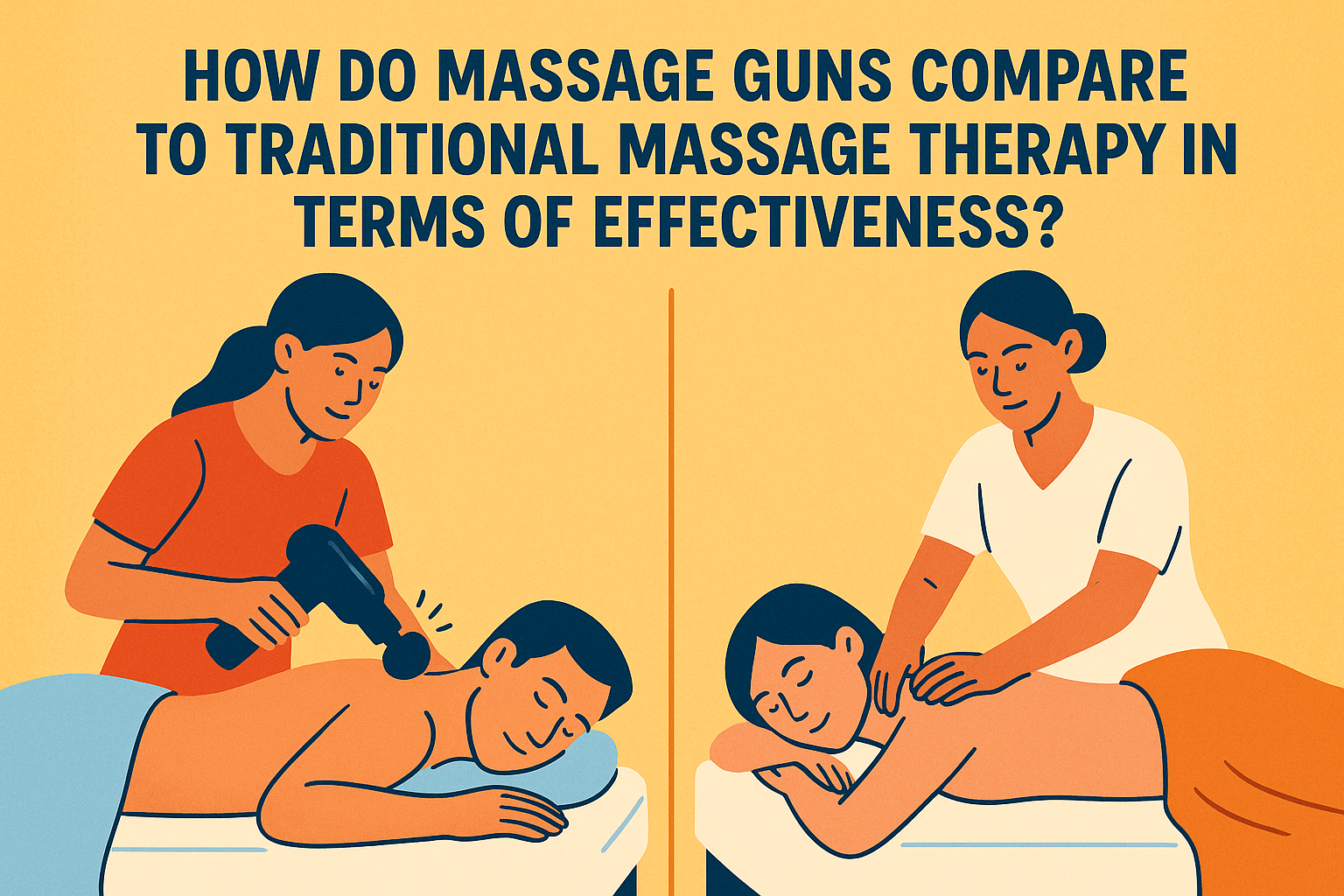


In recent years, massage guns have surged in popularity, especially among athletes, fitness enthusiasts, and busy professionals. These handheld devices promise quick muscle recovery, pain relief, and improved blood circulation—all from the comfort of home. But a question arises: are massage guns as effective as traditional massage therapy provided by licensed therapists?
To answer this, we need to explore how both methods work, their benefits, limitations, and the situations where one may be more effective than the other.
Massage guns use percussive therapy, delivering rapid bursts of pressure into the muscle tissue. This stimulates blood flow, helps reduce muscle stiffness, and promotes faster recovery after workouts.
Most modern massage guns come with multiple speed settings, interchangeable heads, and adjustable intensity. Some even integrate smart sensors to adapt pressure based on muscle resistance.
Most modern massage guns come with multiple speed settings, interchangeable heads, and adjustable intensity. Some even integrate smart sensors to adapt pressure based on muscle resistance.
Swedish massage – gentle and relaxing
Deep tissue massage – targets deeper muscle layers
Sports massage – designed for athletic performance and recovery
Trigger point therapy – relieves localized muscle knots
Unlike massage guns, therapists combine kneading, friction, tapping, and stretching techniques, adapting the pressure and method based on client needs.
Unlike massage guns, therapists combine kneading, friction, tapping, and stretching techniques, adapting the pressure and method based on client needs.
Massage guns are effective at:
Reducing Delayed Onset Muscle Soreness (DOMS)
Improving circulation to aid recovery
Relieving localized stiffness quickly
One of the strongest points in favor of massage guns is convenience. They’re portable, affordable compared to regular therapy sessions, and can be used anytime.
However, they lack personalization. They can’t sense tension patterns, emotional stress, or underlying conditions the way a skilled therapist can.
Traditional massage doesn’t just relieve muscle pain—it also reduces stress, improves sleep quality, and enhances mental well-being.
A therapist tailors the massage to your needs, adjusting techniques for chronic pain, injury recovery, or relaxation.
A therapist tailors the massage to your needs, adjusting techniques for chronic pain, injury recovery, or relaxation.
Drawbacks include higher costs, time commitment, and limited accessibility—especially if therapists aren’t readily available in your area.
| Feature | Massage Guns | Traditional Massage |
|---|---|---|
| Cost | One-time purchase ($100–$500) | $60–$150 per session |
| Convenience | At-home use anytime | Requires scheduling |
| Personalization | Limited | Fully customized |
| Effectiveness | Best for quick relief | Best for long-term results |
| Mental Health Benefits | Minimal | Significant |
Research shows percussion therapy can significantly reduce DOMS and improve flexibility when used correctly.
Studies confirm that massage therapy reduces anxiety, improves circulation, and promotes long-term musculoskeletal health.
Athletes and Fitness Enthusiasts: For quick recovery after workouts.
Busy Professionals: When time and convenience matter most.
Individuals with Chronic Pain: Can supplement traditional therapy.
Stress Management and Relaxation Seekers
People Needing Specialized Care
Patients with Complex Musculoskeletal Conditions
Using too much pressure or applying on sensitive areas can cause bruising, nerve irritation, or worsen injuries.
People with blood clots, fractures, or certain medical conditions should consult a doctor before therapy.
Yes! A hybrid approach works best. Use massage guns for daily maintenance and quick recovery, while scheduling traditional massages for deeper relaxation and targeted treatment.
Yes! A hybrid approach works best. Use massage guns for daily maintenance and quick recovery, while scheduling traditional massages for deeper relaxation and targeted treatment.
Most physical therapists recommend using massage guns as a supplement—not a replacement—for professional therapy.
Most physical therapists recommend using massage guns as a supplement—not a replacement—for professional therapy.
Q1: Are massage guns safe for daily use?
Yes, but they should be used moderately (10–15 minutes per session).
Q1: Are massage guns safe for daily use?
Yes, but they should be used moderately (10–15 minutes per session).
Q2: Can massage guns replace traditional massage completely?
No, they complement but don’t replace the holistic benefits of a therapist.
Q4: Are massage guns suitable for older adults?
Yes, but only at low settings and with medical approval.
Q5: Which is better for athletes: massage guns or therapy?
Both! Massage guns are great for daily recovery, but athletes still benefit from regular professional sessions.
Q6: How often should I get a professional massage?
For general wellness, once a month is sufficient; for injuries, weekly sessions may be recommended.
Q6: How often should I get a professional massage?
For general wellness, once a month is sufficient; for injuries, weekly sessions may be recommended.
Massage guns are excellent tools for quick, affordable, and convenient muscle relief, especially for fitness enthusiasts. However, traditional massage therapy offers deeper, holistic benefits, addressing both physical and mental well-being.
🔗 Learn more about the science of massage at Mayo Clinic’s Massage Therapy Guide.